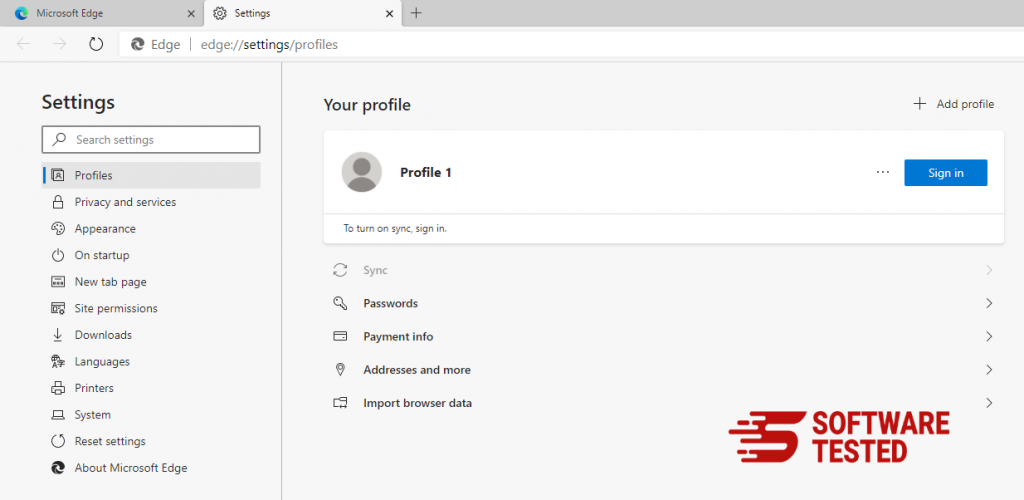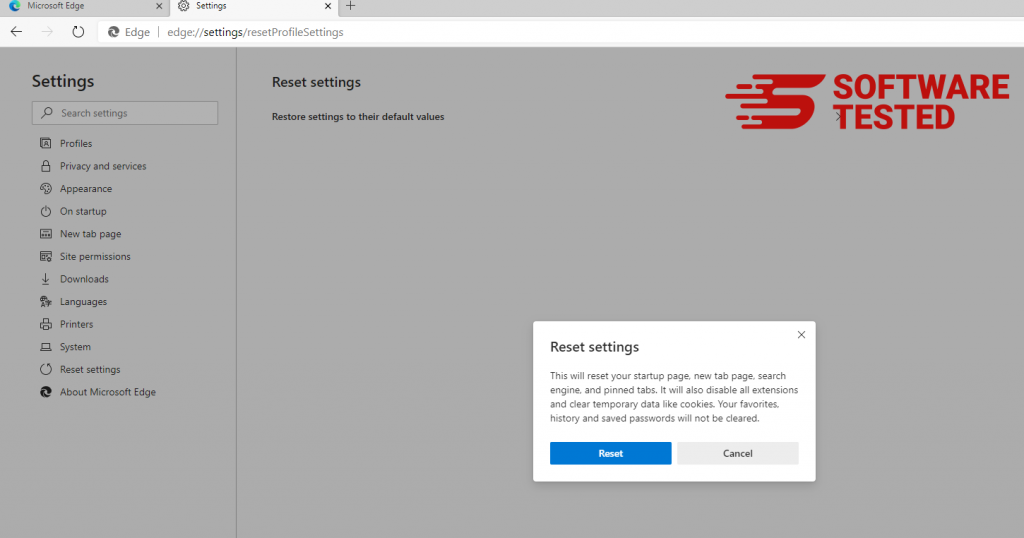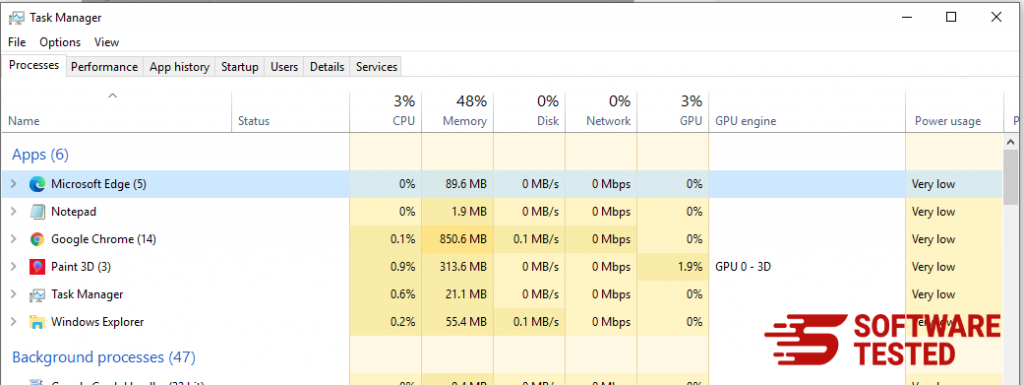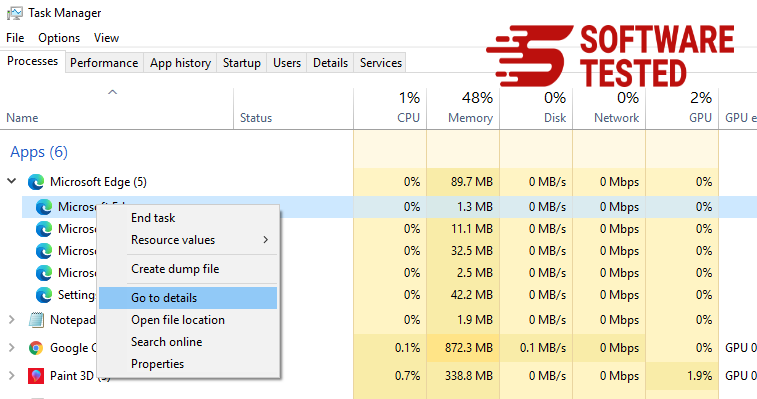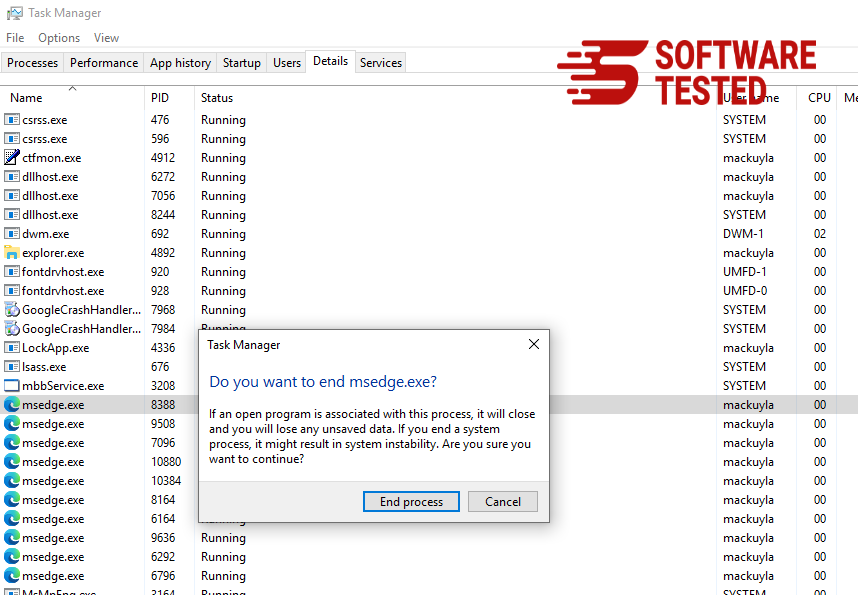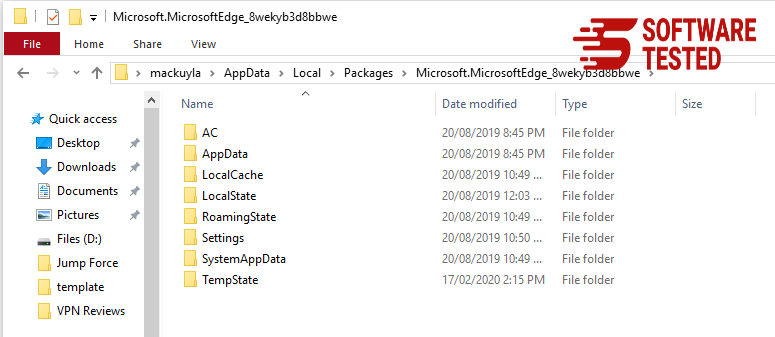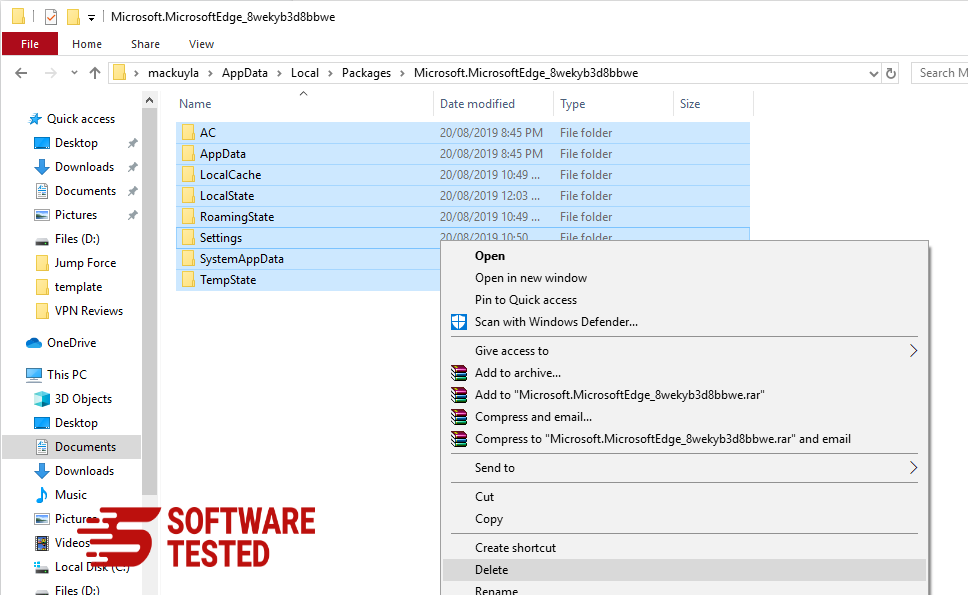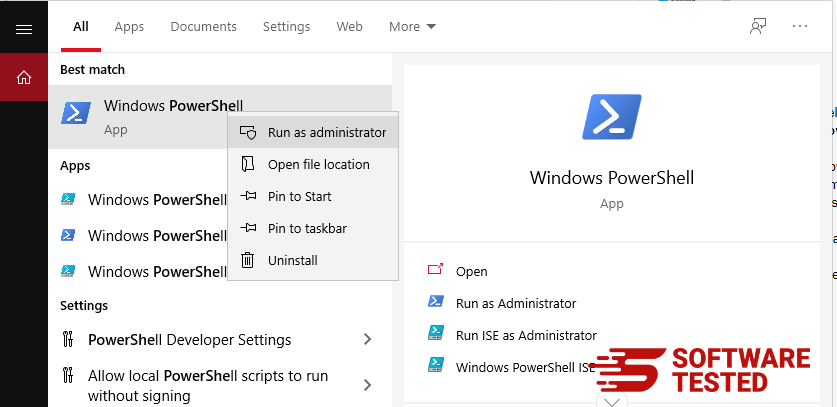ShortcutTab is a PUP that gets installed on people’s computers without their consent. It is also classified as a browser hijacker. Generally speaking, browser hijackers make unpleasant changes to the existing browser settings and typically get installed without the user’s consent.
When ShortcutTab gets installed, it modifies the existing browser settings, e.g., the homepage and the new tab URL so that your queries are automatically rerouted to “s.advancedsearchlab.com.” It will then take you to Yahoo or Bing. The browser hijacker serves users with sponsored content from which the developers benefit from financially. If you know the different types of malware and what they do, you can tell that this browser hijacker is a type of adware from how it behaves.
What is ShortcutTab Browser Hijacker?
The ShortcutTab browser hijacker is a program that promises to provide users with access to multiple search engines, which actually it doesn’t do. In fact, it fails terribly at executing such functionality. It rather performs malicious actions such as reading the user’s search queries.
The main purpose of monitoring the user’s browsing history is to get their data, which they subsequently sell to third-party companies.
What Can ShortcutTab Do?
When your computer gets infected by the ShortcutTab program, the results that are returned when you make a query are from Google Custom Search or sometimes Yahoo and Bing. The developers behind the app designed it this way to generate revenue from the ads shown in the results.
As soon as the browser hijacker gets appended to Google Chrome, Safari, Mozilla Firefox, MS Edge, or any other browser, some changes are done.
The PUP changes the new tab address and the homepage of the web browser. However, this change isn’t apparent, as the only visible symptom of the infection is the lack of a regular search bar. For example, the browser still shows Google.com, but the search bar is missing. For this reason, most users do not even realize that the web browser has been hijacked.
Some of the most noticeable symptoms are:
- “ShortcutTab” or other unwanted add-ons get installed on your computer.
- The homepage and all new tabs lead to the s.advancedsearchlab.com, and then to a trusted search engine.
- Ads show up on the different pages that you visit.
- Search results are filled with sponsored links and other ads.
- The browser functions slow down significantly.
How Did ShortcutTab Get on Your Device?
Browser hijackers, such as this one, are usually bundled with some free software programs that users download from the internet. Another source of such an infection could be official places like Web Store, where it could get installed unintentionally. Once the free software starts running, the browser hijacker infects the computer and changes your browser’s settings.
To protect your computer from such malicious infections when downloading software, you ought to:
- Read the “Terms of use” and the “license agreement.”
- You should also select the “manual” or “Advanced” setup option to get rid of the add-ons, system optimizers, and downloaded managers.
- It would also help to be extra vigilant when performing routine web browsing activities. Whenever possible, you’re advised to avoid visiting dubious third-party sources and only rely on official application websites such as Microsoft Store.
- Before you download software, do not forget to check the reviews and forum posts to get information about it.
- Enabling an adblocker program is another effective way to alleviate the risks. These ad-blocking programs not only protect you from harmful adverts, but they also stop the redirection chain to ShortcutTab.
How to Remove ShortcutTab?
As previously mentioned, this browser hijacker analyzes your browsing patterns, gaining access to your confidential information. These are more than enough reasons to get rid of the ShortcutTab. These programs might, at first glance, seem like very useful additions, but it’s best to remove the ShortcutTab from the web browser as soon as possible.
To get rid of a malicious program like ShortcutTab, you need to follow specific ShortcutTab removal instructions to remove the installed extensions and programs. Additionally, you would also need to perform an automatic scan for a more extensive clean up.
In some instances, manual removal may become difficult. When this happens, you should employ a robust anti-malware tool to perform a full system scan. It’s recommended that you find a tool that’ll comprehensively protect your computer from PUPs and other significant threats such as ransomware. It should also improve the overall performance of the system that was once infected.
Finally, you need to reset all the installed web browsers if nothing else seems to help.
How to Remove ShortcutTab Browser Hijacker from Google Chrome
To completely remove ShortcutTab Browser Hijacker from your computer, you need to reverse all of the changes on Google Chrome, uninstall suspicious extensions, plug-ins, and add-ons that were added without your permission.
Follow the instructions below to remove ShortcutTab Browser Hijacker from Google Chrome:
1. Delete malicious plugins.
Launch the Google Chrome app, then click on the menu icon at the upper-right corner. Choose More Tools > Extensions. Look for ShortcutTab Browser Hijacker and other malicious extensions. Highlight these extensions you want to uninstall, then click Remove to delete them.
2. Revert changes to your homepage and default search engine.
Click on Chrome's menu icon and select Settings. Click On Startup, then tick off Open a specific page or set of pages. You can either set up a new page or use existing pages as your homepage.
Go back to Google Chrome's menu icon and choose Settings > Search engine, then click Manage search engines. You'll see a list of default search engines that are available for Chrome. Delete any search engine that you think is suspicious. Click the three-dot menu beside the search engine and click Remove from list.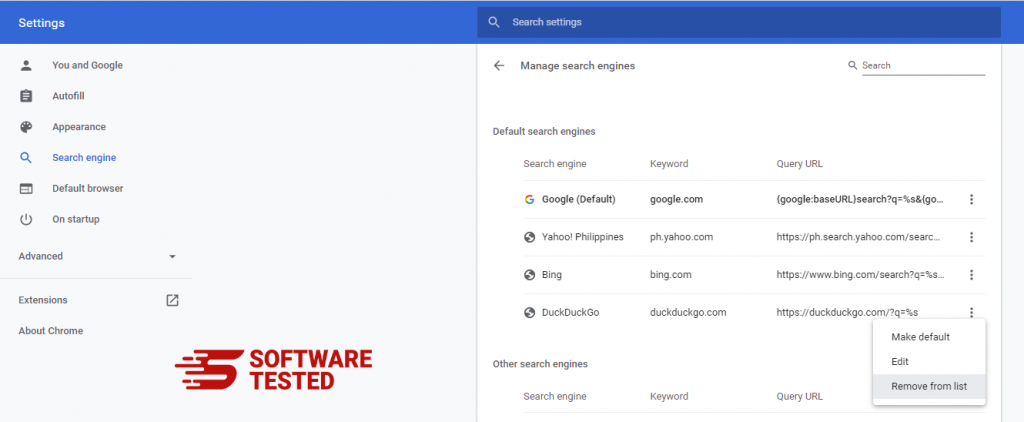
3. Reset Google Chrome.
Click on the menu icon located at the top right of your browser, and choose Settings. Scroll down to the bottom of the page, then click on Restore settings to their original defaults under Reset and clean up. Click on the Reset Settings button to confirm the action.
This step will reset your startup page, new tab, search engines, pinned tabs, and extensions. However, your bookmarks, browser history, and saved passwords will be saved.
How to Delete ShortcutTab Browser Hijacker from Mozilla Firefox
Just like other browsers, malware tries to change the settings of Mozilla Firefox. You need to undo these changes to remove all traces of ShortcutTab Browser Hijacker. Follow the steps below to completely delete ShortcutTab Browser Hijacker from Firefox:
1. Uninstall dangerous or unfamiliar extensions.
Check Firefox for any unfamiliar extensions that you don't remember installing. There is a huge chance that these extensions were installed by the malware. To do this, launch Mozilla Firefox, click on the menu icon at the top-right corner, then select Add-ons > Extensions.
In the Extensions window, choose ShortcutTab Browser Hijacker and other suspicious plugins. Click the three-dot menu beside the extension, then choose Remove to delete these extensions.
2. Change your homepage back to default if it was affected by malware.
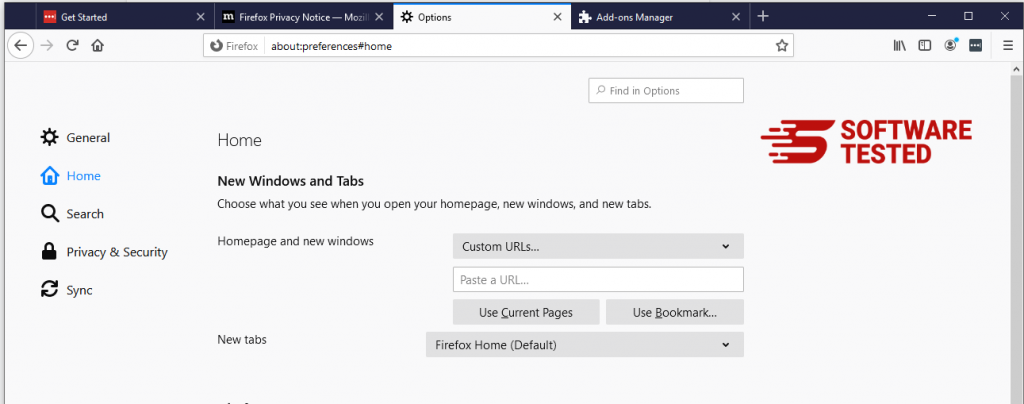
Click on the Firefox menu at the upper-right corner of the browser, then choose Options > General. Delete the malicious homepage and type in your preferred URL. Or you can click Restore to change to the default homepage. Click OK to save the new settings.
3. Reset Mozilla Firefox.
Go to the Firefox menu, then click on the question mark (Help). Choose Troubleshooting Information. Hit the Refresh Firefox button to give your browser a fresh start.
Once you’ve completed the steps above, ShortcutTab Browser Hijacker will be completely gone from your Mozilla Firefox browser.
How to Get Rid of ShortcutTab Browser Hijacker from Internet Explorer
To ensure that the malware that hacked your browser is completely gone and that all unauthorized changes are reversed on Internet Explorer, follow the steps provided below:
1. Get rid of dangerous add-ons.
When malware hijacks your browser, one of the obvious signs is when you see add-ons or toolbars that suddenly appear on Internet Explorer without your knowledge. To uninstall these add-ons, launch Internet Explorer, click on the gear icon at the top-right corner of the browser to open the menu, then choose Manage Add-ons.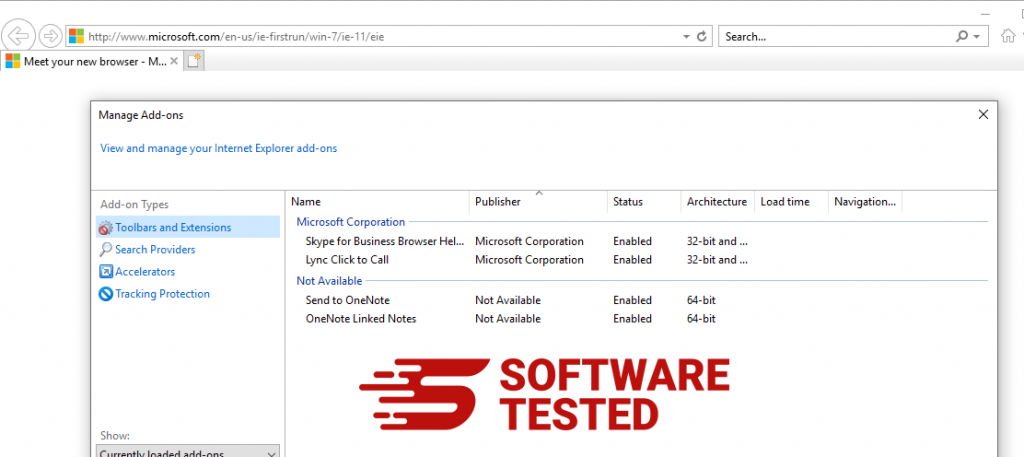
When you see the Manage Add-ons window, look for (name of malware) and other suspicious plugins/add-ons. You can disable these plugins/add-ons by clicking Disable.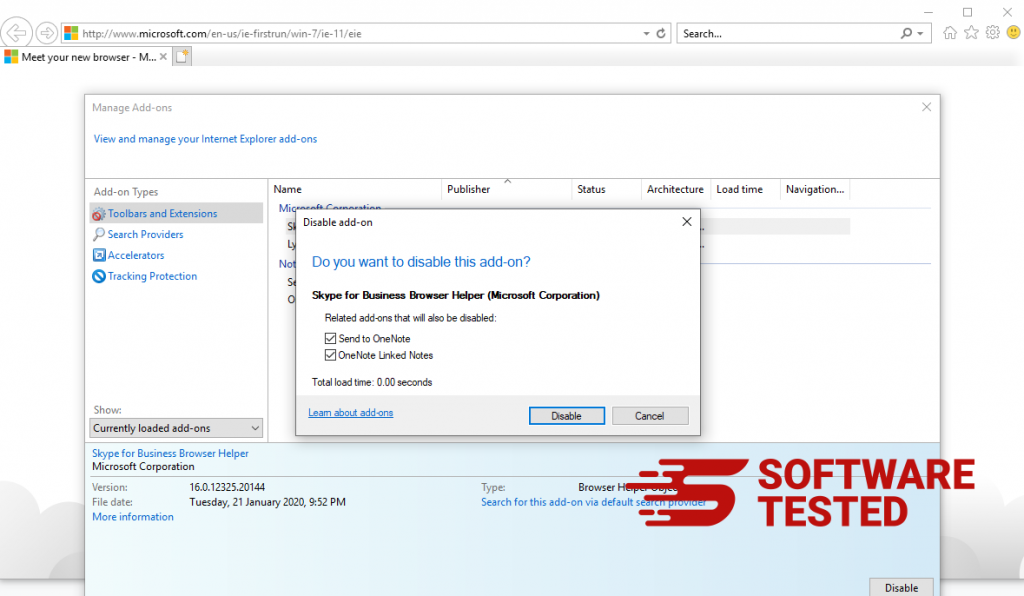
2. Reverse any changes to your homepage caused by the malware.
If you suddenly have a different start page or your default search engine has been changed, you can change it back through the Internet Explorer's settings. To do this, click on the gear icon at the upper-right corner of the browser, then choose Internet Options.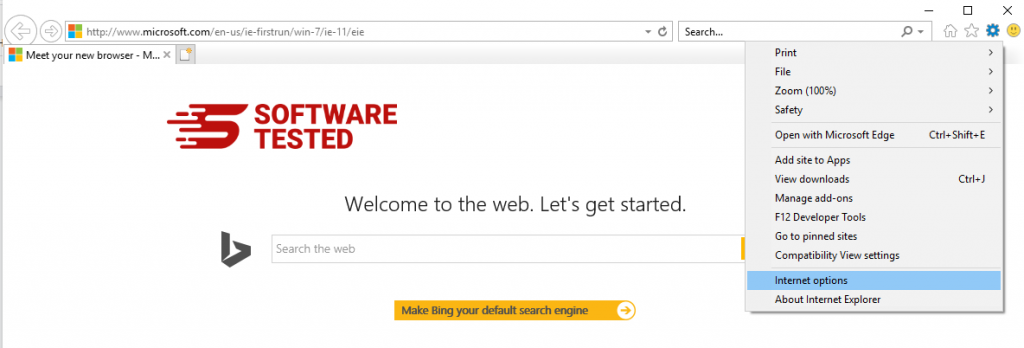
Under the General tab, delete the homepage URL and enter your preferred homepage. Click Apply to save the new settings.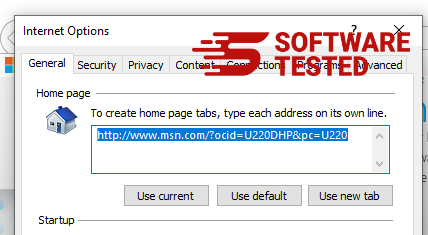
3. Reset Internet Explorer.
From the Internet Explorer menu (gear icon at the top), choose Internet Options. Click on the Advanced tab, then select Reset.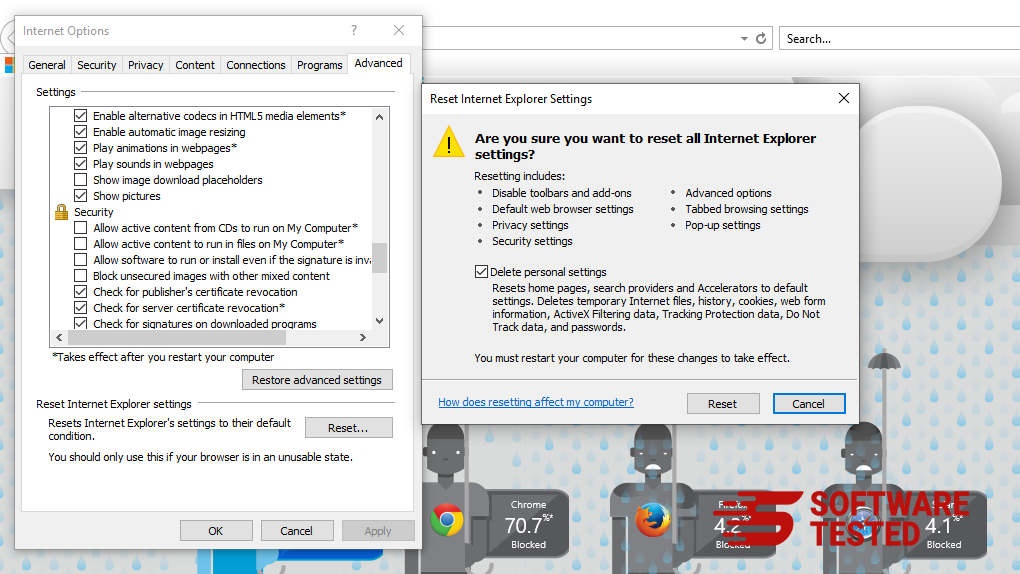
In the Reset window, tick off Delete personal settings and click the Reset button once again to confirm the action.
How to Uninstall ShortcutTab Browser Hijacker on Microsoft Edge
If you suspect your computer to have been infected by malware and you think that your Microsoft Edge browser has been affected, the best thing to do is to reset your browser.
There are two ways to reset your Microsoft Edge settings to completely remove all the traces of malware on your computer. Refer to the instructions below for more information.
Method 1: Resetting via Edge Settings
- Open the Microsoft Edge app and click More or the three-dot menu located at the upper-right corner of the screen.
- Click Settings to reveal more options.

- In the Settings window, click Restore settings to their default values under Reset settings. Click the Reset button to confirm. This action will reset your browser’s startup page, the new tab page, default search engine, and pinned tabs. Your extensions will also be disabled and all temporary data like cookies will be deleted.

- Afterwards, right-click on the Start menu or the Windows logo, then select Task Manager.
- Click on the Processes tab and search for Microsoft Edge.

- Right-click on the Microsoft Edge process and select Go to details. If you don't see the Go to details option, click More details instead.

- Under the Details tab, look for all the entries with Microsoft Edge in their name. Right-click on each of these entries and choose End Task to quit those processes.

- Once you have quit all those processes, open Microsoft Edge once again and you'll notice that all the previous settings have been reset.
Method 2: Resetting via Command
Another way to reset Microsoft Edge is by using commands. This is an advanced method that is extremely useful if your Microsoft Edge app keeps crashing or won't open at all. Make sure to back up your important data before using this method.
Here are the steps to do this:
- Navigate to this folder on your computer: C:\Users\%username%\AppData\Local\Packages\Microsoft.MicrosoftEdge_8wekyb3d8bbwe.

- Select everything inside the folder, right-click on the highlighted files, then click Delete from the options.

- Search for Windows PowerShell using the search box beside the Start menu.
- Right-click on the Windows PowerShell entry, then choose Run as administrator.

- In the Windows PowerShell window, type in this command:
Get-AppXPackage -AllUsers -Name Microsoft.MicrosoftEdge | Foreach {Add-AppxPackage -DisableDevelopmentMode -Register $($_.InstallLocation)\AppXManifest.xml -Verbose}
- Press Enter to execute the command.
- Once the reset process has been completed, ShortcutTab Browser Hijacker should be completely deleted from your Microsoft Edge browser.
How to Get Rid of ShortcutTab Browser Hijacker from Safari
The computer’s browser is one of the major targets of malware — changing settings, adding new extensions, and changing the default search engine. So if you suspect your Safari to be infected with ShortcutTab Browser Hijacker, these are the steps you can take:
1. Delete suspicious extensions
Launch the Safari web browser and click on Safari from the top menu. Click Preferences from the drop-down menu.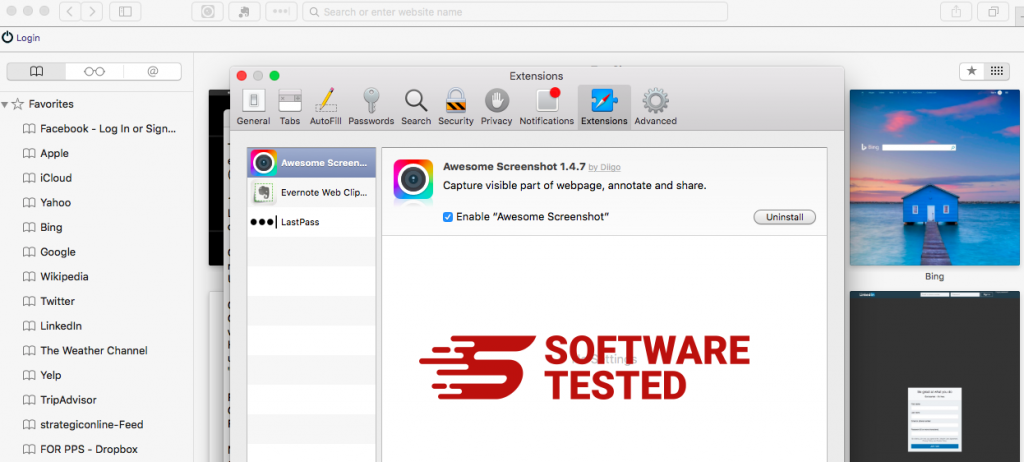
Click on the Extensions tab at the top, then view the list of currently installed extensions on the left menu. Look for ShortcutTab Browser Hijacker or other extensions you don’t remember installing. Click the Uninstall button to remove the extension. Do this for all your suspected malicious extensions.
2. Revert changes to your homepage
Open Safari, then click Safari > Preferences. Click on General. Check out the Homepage field and see if this has been edited. If your homepage was changed by ShortcutTab Browser Hijacker, delete the URL and type in the homepage you want to use. Make sure to include the http:// before the address of the webpage.
3. Reset Safari
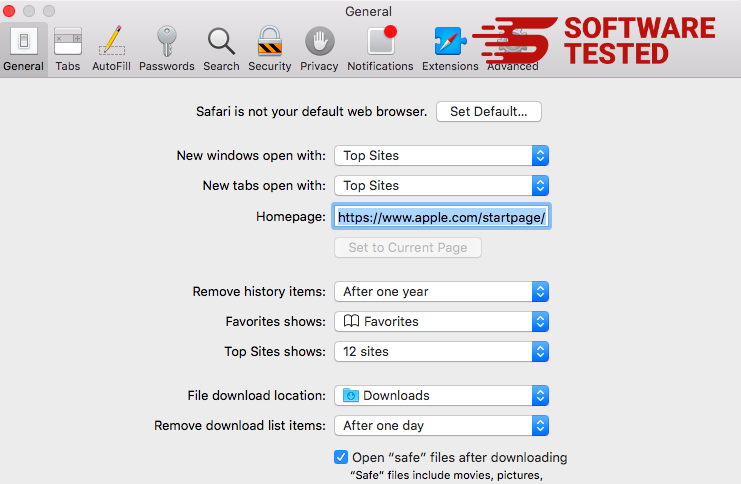
Open the Safari app and click on Safari from the menu at the upper-left of the screen. Click on Reset Safari. A dialog window will open where you can choose which elements you want to reset. Next, click the Reset button to complete the action.
Conclusion
Most people install ShortcutTab unintentionally. In most cases, deception is used to make them install sponsored apps without their knowledge. Luckily, modern web browsers like Google Chrome and Mozilla Firefox warn the users about these threats so that they can avert the consequences of a browser hijack.

